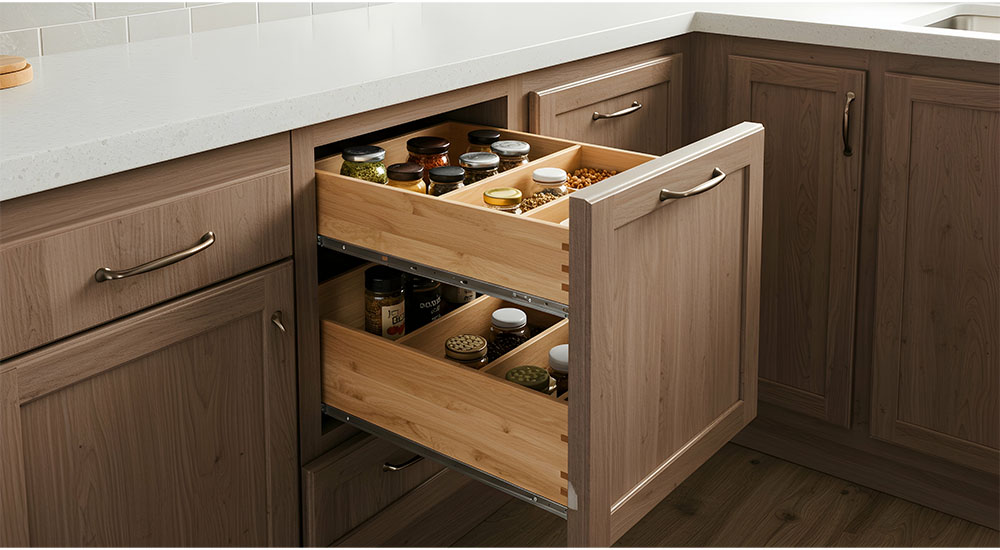There’s something that virtually all great chefs and passionate home cooks have in common: They all wish they had more kitchen storage.
After all, one of the great joys of the culinary arts is stocking up on innovative gadgets, beautiful dishware and tantalizing ingredients. Even in the most well-apportioned kitchen, space is bound to run out eventually.
Fortunately, there are some simple strategies that professional kitchen designers can use to create more useful storage space in even the most modest of kitchen environments – providing a wider range of functionality for their clientele.
Shelves and Cabinets
When storage space is limited, it’s important to be resourceful, seeking smart ways to maximize every square inch, and that starts with cabinetry.
First and foremost, kitchen designers must think vertically, using all the available wall space from floor to ceiling to create storage solutions. In all but the loftiest kitchens, ceiling-height cabinets can be installed to ensure no potential storage space goes to waste.
As an alternative to extensive cabinetry, pegboard and floating shelves can be mounted on the walls; pull-down racks provide an option to make higher-positioned storage spaces more accessible. Breaking up wall-to-wall cabinet coverage with some of these other storage options may create a more aesthetically pleasing kitchen space – without any loss of function.
Maximizing kitchen storage space isn’t just about thinking vertically, but also about using the right kinds of storage areas. Deep drawers often make more sense than cabinets, providing greater accessibility. Pull-out pantry units can pack a lot of usable storage space into a compact footprint. And lazy Susans are essential for corner cabinets, ensuring there’s no dead space where items are functionally out of reach to kitchen owners.
Even choosing the right kind of hardware can help to maximize kitchen storage. Touch-latch cabinet drawers eliminate the need for cumbersome handles, making more confined kitchen spaces feel less crowded. Full-extension drawer slides ensure that kitchen owners can access even those items stored at the very back of a deep drawer or pull-out cabinet, meaning the full expanse of kitchen real estate can be put to good use.
Cabinet Inserts: Key Technical Considerations
Still another option to consider is the use of cabinet inserts, which provide a way to generate further storage space within existing cabinet structures. Inserts can subdivide existing cabinets into discrete spaces, allowing for more items to be stored in an organized fashion.
To use cabinet inserts effectively, it’s important to consider a few technical aspects:
• The material matters. Opting for cheaper materials may lead to diminishing returns – not only because the inserts themselves degrade, but because they can cause wear and tear on stored items. Stainless steel, hardwood and reinforced plastic tend to offer the longest lifespans, and inserts with smoother finishes can minimize any friction on those items stored. Also note that inserts graded for moisture resistance are necessary for areas that experience high humidity, including storage near sinks.
• Align inserts with cabinet dimensions. A precision fit requires exacting measurements of the cabinet’s height, depth and width. Also keep in mind that adjustable inserts can provide flexibility to the kitchen owner, allowing them to tailor the available space to the particular items they need stored.
• Don’t forget weight. Some kitchen equipment, including various forms of cookware, can be quite heavy. Providing safe storage solutions means using reinforced mounting systems, which can prevent inserts from sagging.
A little creativity – and a willingness to see the kitchen not just for its limitations, but its possibilities – can go a long way toward making the space feel more functional. And in the end, that makes it a more alluring space for homeowners to spend their time.
—Bob DeGraff is president of N-Hance, a nationwide leader in wood cabinet repair, refinishing and restoration









